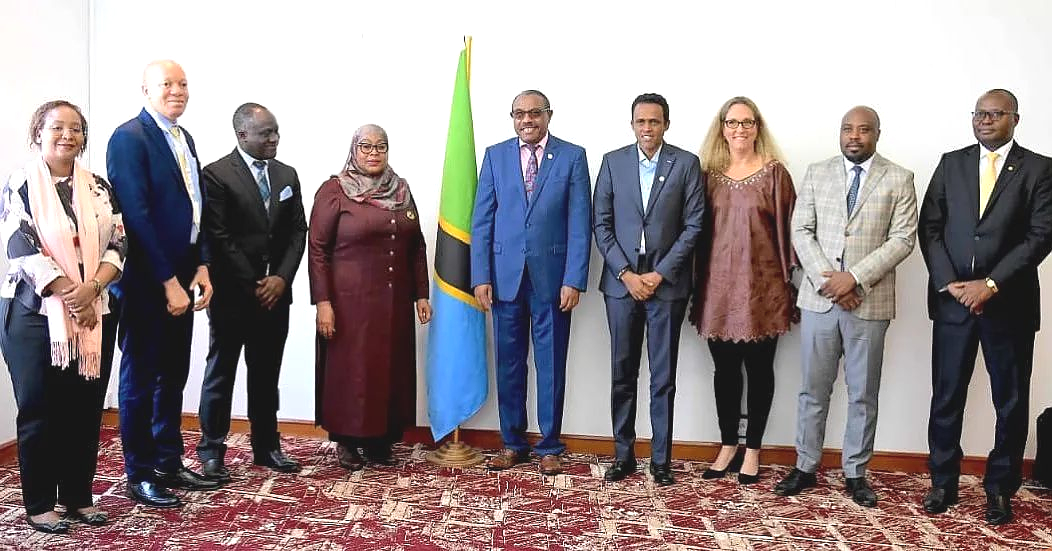Dairy master plan in the pipeline
“We are making efforts to ensure that the master plan is ready and comes into practice. Kenya implemented their dairy master plan in the 1990s and their production is better than ours. That’s why there is an urgent need for drawing the plan in our country.
Tanzania Milk Processors Association (Tampa) has it will fully participate at every stage in the process of drawing the National Dairy Master Plan in order to ensure that all crucial aspects along dairy value chain are included in the plan.
Tampa Chief Executive Officer Edmund Mariki says dairy is one of the key sectors in Tanzania with high potential for improving food security, creating employment especially for rural households and contributing to economic development.
There are ongoing initiatives to build a dairy master plan in Tanzania; that is why the milk processors’ association believes that the need to draw the plan cannot be over emphasized.
“Tampa, as an association of milk processors which represents the interests of more than 90 per cent of milk processors throughout the country, we are working closely with key organisations such as Tanzania Dairy Board (TDB), Ministry of Livestock and Fisheries Development (MLFD) and non-state actors in order to realise the dairy master plan. We strongly believe that the plan will inform policy makers and the private sector on the road map for an enhanced dairy industry,” says Mariki.
What Tampa will do
The Dairy Master Plan will give recommendations aimed at reviving the dairy sector. Among other things, Tampa’s work aims to lobby and advocate the creation of a plan that gives special emphasis on the role of markets and price mechanism in directing resources along the milk value chain.
Mariki adds that it is envisioned that the plan will also advocate private sector finance investments in milk production and entrepreneurship in milk collection and processing. Tampa intends to fully participate at every stage of the process and engage its members in order to ensure that all crucial aspects along dairy value chain are included in the master plan
For his part, Heifer International Tanzania Country Director Dr Henry Njakoi says that the plan is a road map for upgrading and improving the dairy industry, therefore it’s very essential for the country to have it.
“The best way to improve the dairy sector is to draw a master plan that can be used as a road map to ensure that all dairy planning and projects are well implemented professionally,” he says.
He adds: “Well, as a stakeholder, I can assure you that the processing of Tanzania’s Dairy Master Plan is going on well. Since it is very essential to the improvement of the sector, I believe that it will soon be completed.”
He also says that the plan will give direction for positive changes as well as indicate how much and what kind of interventions should be made, in terms of policy, programmes or projects.
Plan is central guide
“A national dairy master plan is therefore a guide to dairy stakeholders who include dairy farmers, milk processors, input and service providers, retailers, planners and policy-makers on the best approach in examining the sector, opportunities, constraints, future possibilities and also risks and external factors that impact on it,” Dr Njakoi says.
Tanzania Dairy Board (TDB) former board chairman Prof Lusato Kurwijila says, introduction of the master plan will give a chance to the dairy industry to increase production from the current1.8 billion litres a year to 6 billion litres in 2025.
Prof Kurwijila, who is also a senior lecturer at Sokoine University of Agriculture (Sua), says that the 6 billion liters of milk is what Kenya currently produces per year, compared to Tanzania’s 1.8 billion litres.
“Hence, there is a need to ensure that the National Dairy Master Plan is implemented soon so as to solve the challenges facing the industry,” he says.
“We are making efforts to ensure that the master plan is ready and comes into practice. Kenya implemented their dairy master plan in the 1990s and their production is better than ours. That’s why there is an urgent need for drawing the plan in our country,” he advises.
He underscores that the master plan will contain a framework of how the huge potential of economic value of the dairy industry can be tapped to drive development goals through transformation into a globally competitive dairy value chain that will provide high quality life and create more wealth.
Plan to reform dairy sector
“The master plan will develop strategies that would make the dairy industry change its market orientation, value addition and use modern dairy farming technologies,” he says.
A master plan is a strategic policy document indicating the general framework for planning the development of a sector, sub-sector or a region. Besides, it provides the necessary framework to guide the progressive development of future investments.
Further, it also gives some level of certainty and predictability for possible interventions and investments in the short, medium and long-term scenarios.
Livestock and Fisheries Development official, Yakobo Msanga, believes that in order to increase milk production in the country, it is necessary to have 3 million dairy cattle by 2025.
“In order to achieve the goal, the major method of breeding is expected to be artificial insemination using improved dairy breeds of which currently about 70,000 cows are being inseminated per year. This is hardly one per cent of the estimated seven million able female cattle to be bred,” he notes.
Msanga also says that due to better performance, the demand for crossbred dairy heifers is 50,000 per year while the supply is only 10,000 heifers, adding that the reasons for the shortfall is inadequate crossbreeding activities especially little use of artificial insemination (AI).
He points out that the main method used to produce dairy heifers in the country is crossbreeding at the government-run Livestock Multiplication Units (LMUs).
“LMUs and other methods produce an average of 10,000 heifers annually. The breeding programme in the LMU uses improved bulls mainly by natural service. To improve the situation, the government established a National Insemination Centre (Naic) and six zonal centres to enable the service reach the farmers,” he explans.
Heifer International is a charity organisation working to end hunger and poverty around the world by providing livestock and training to struggling communities.
Ends
____
Quote:


